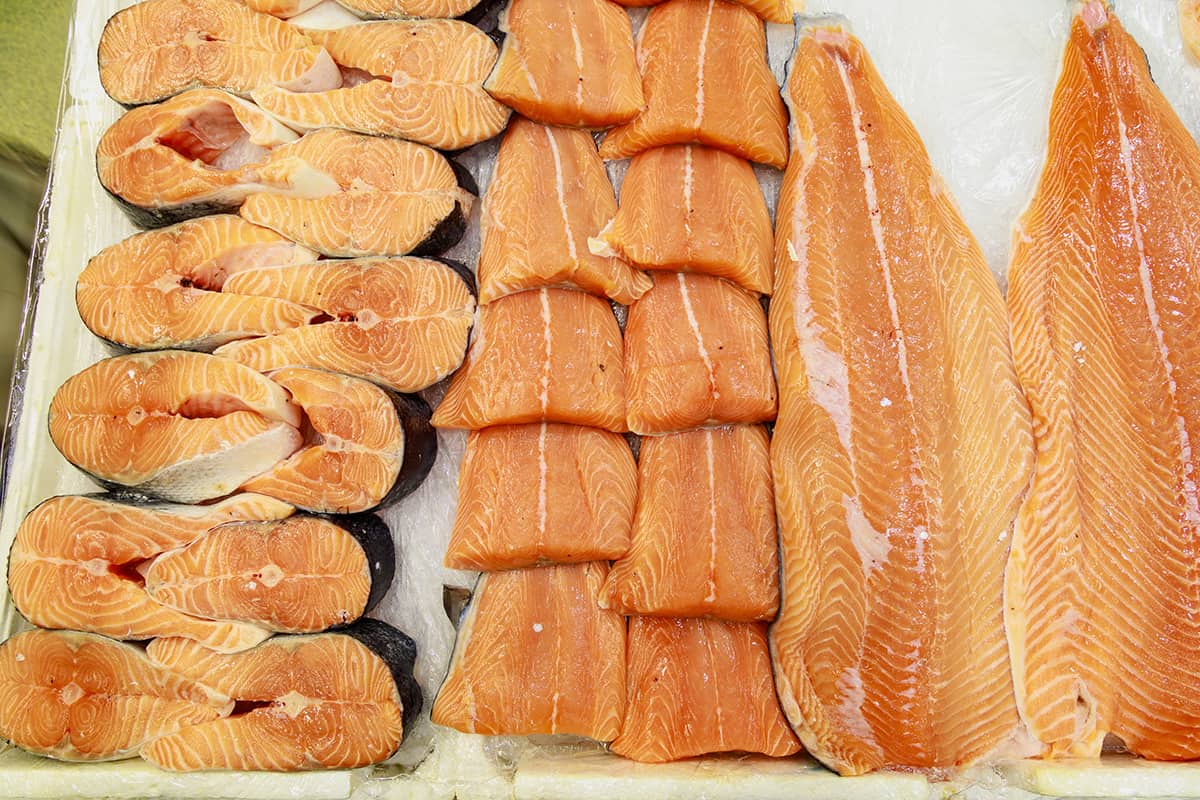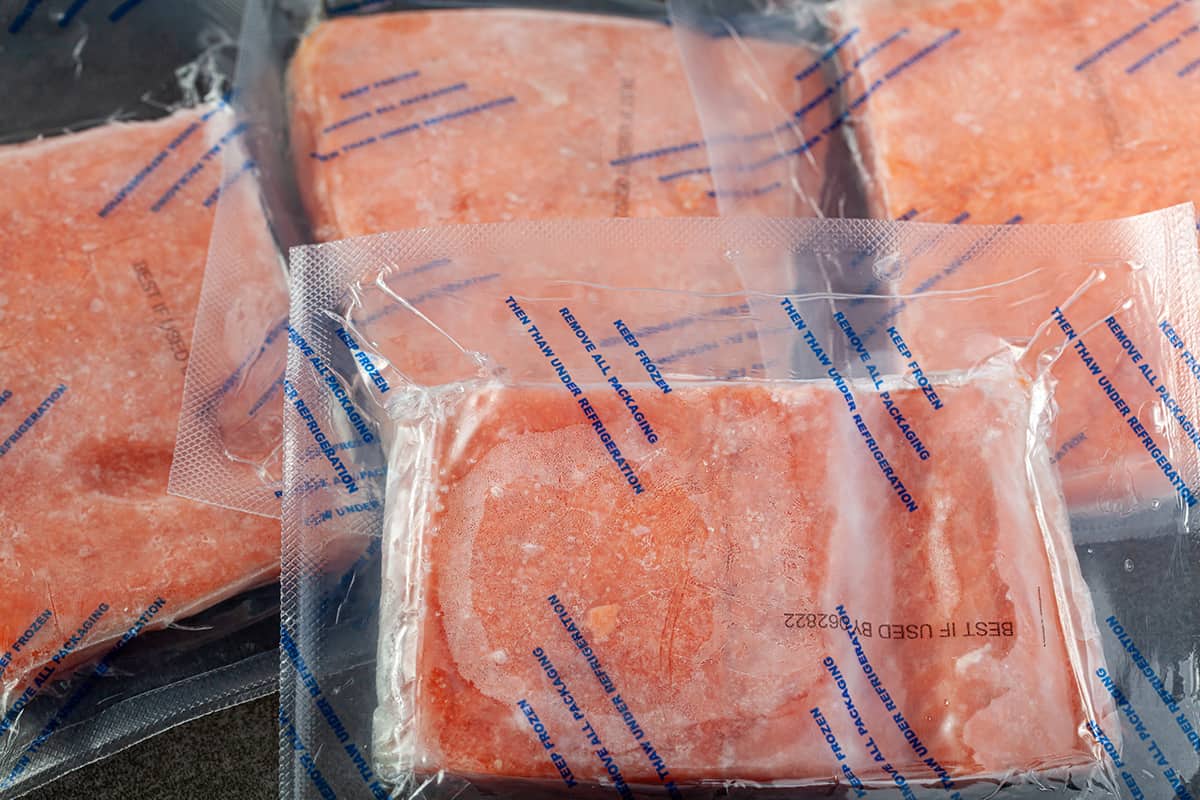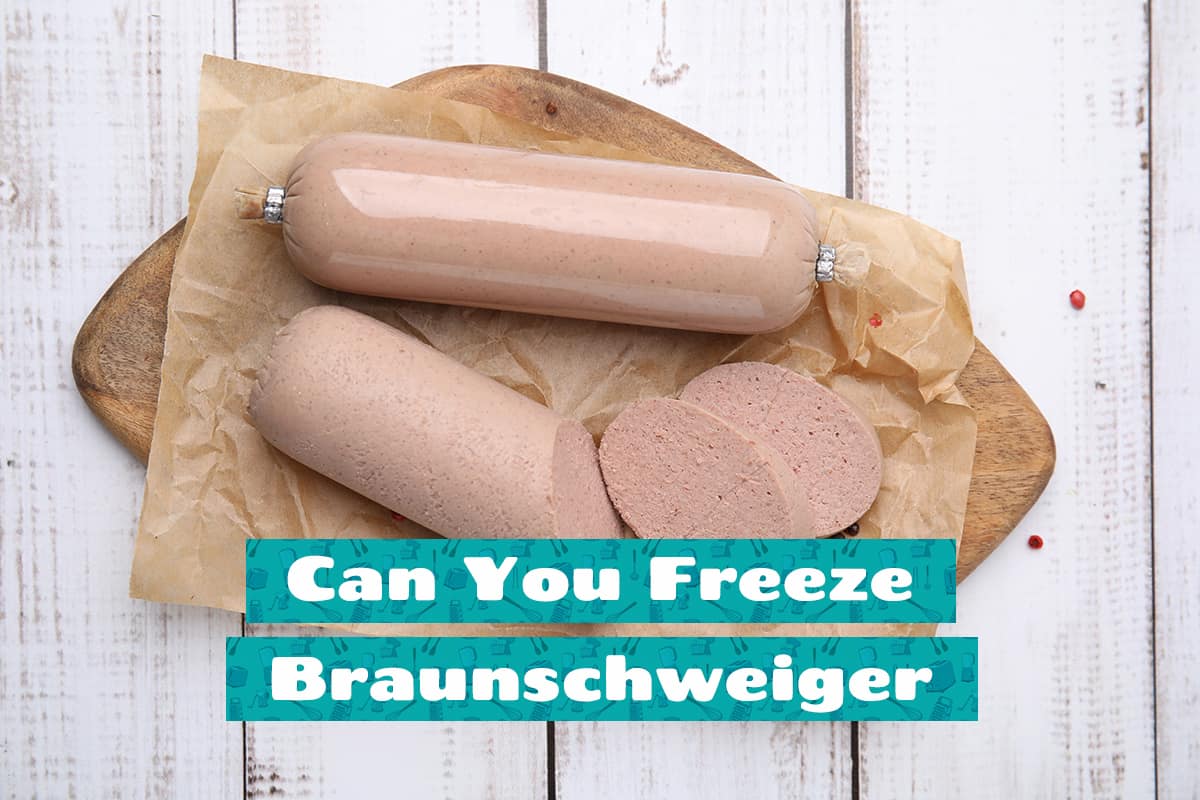One of the trickiest ingredients to cook and store is fish, and salmon is the most challenging of them all. While salmon can be incredibly good for you, storing salmon properly to maximize its shelf life can be a pain in the neck. For instance, do you know how long salmon is good for after defrosting?
On average, thawed salmon will remain good for up to 2 days in the fridge with proper storage. However, the best thing you can do is to immediately use the salmon after it has been taken out of the freezer.
In this guide, I will cover how long salmon remains good after thawing in more detail, as well as describe the most reliable way to store salmon after it has been defrosted.
How Long Is Salmon Good for After Thawed?
Salmon, which is one of the healthiest types of freshwater fish, can be a pain to deal with. Not only do you have to worry about deboning a salmon by picking out the individual pin bones, but you also have to consider how much time you have before it goes bad.
Luckily, most salmon is sold frozen, so you don’t have to worry very much about whether or not it will remain fresh on the trip home. The real concern is when the salmon has defrosted and how much time you have left before the pink flesh starts to turn gray.
The good news is that you have 2 days to work with thawed salmon, provided you immediately store it in the fridge after it has defrosted completely. That 48-hour window should give you enough time to look at various salmon recipes and choose which one suits your taste buds best.
However, this is just a rough estimate. It’s possible for defrosted salmon to expire before your 48 hours are up, just as much as it’s possible for defrosted salmon to last 5 days in the fridge with proper storage.
The type of salmon you purchased will affect its fridge life. Due to long supply chains, it can take fishmongers up to 30 days before they receive a fresh batch of salmon.
During that time, there’s no way to tell what sort of microorganisms has set up their home base in the salmon’s pink flesh, which can accelerate spoilage.
The best thing you can do is purchase salmon locally. That way, you know that the slab of fish hasn’t been touched by too many hands and that it is as fresh as possible behind the fishmonger’s display window. If this is impossible, then stick to grocery store salmon, but be mindful of its accelerated expiration rate.
How Do I Store Salmon?
The next natural question is, how do you keep thawed salmon fresh for 2 days? Sticking it in the fridge won’t do—there’s a process you should follow to ensure the salmon doesn’t spoil.
Step 1: Defrost the salmon completely. Raw salmon is only good for 2 hours at room temperature, so defrost it in the fridge instead. It should take 1 or 2 days before it has completely defrosted and the 48-hour expiration timer begins.
Step 2: Insert the salmon into a vacuum-seal bag. Due to its rich fat content, salmon can oxidize fairly quickly. Excess oxygen inside the bag can cause the fat in salmon to go sour, rendering the entire fillet inedible.
Alternatively, you can use a resealable Ziploc bag and suck the air out using a straw. Just do your best to remove as much air from the bag as you can.
Step 3: Stick the bag inside your refrigerator. Ideally, your fridge should be close to freezing (32°F or 0°C). However, since most residential fridges are set at 38°F (3.33°C) on their lowest setting, you should consider placing the bagged salmon in a bowl of ice before inserting the bowl into your refrigerator. Make sure the bag is completely covered in ice and that the seal is shut completely.
How Long Does Frozen Salmon Last?

Let’s say you purchased your salmon from a local fishmonger that’s only a 2-minute drive from your home. Before the salmon has had time to defrost on the trip back home, you should pop it in the freezer if you don’t plan on using it right away.
Frozen salmon has a longer shelf life of up to 12 months. That should give you plenty of time to decide when you want to cook the salmon and which recipe to follow. Whenever you’re ready, transfer the salmon from your freezer to the fridge and let it rest for 1 to 2 days to defrost completely.
How Do I Defrost Salmon?

There are 3 salmon defrosting methods you should consider—namely, placing the bagged salmon in a water bath, refrigerating the uncovered salmon, and microwaving it.
Water Bath Method—Fill a large bowl or basin with water and ice. Place the frozen salmon in a resealable bag. Submerge the bag in the bowl or basin and leave it there for 1 to 2 days. You might need to place a plate on top of the bag to keep it submerged completely.
Refrigeration Method—Remove the salmon from its packaging. Place it on a plate. Insert the plate into your fridge and let it stay there for 1 to 2 days. Avoid placing aromatic ingredients (e.g., garlic) in your fridge while attempting this method.
Microwave Method—Remove the salmon from its packaging. Place it in a microwave-safe bowl. Insert it into the microwave. Set the microwave to defrost mode or its lowest power setting. Continue microwaving the salmon until it has thawed completely.
Can I Refreeze Thawed Salmon?
Yes, you can! In fact, this is probably the best thing you can do with salmon that was purchased fresh from the market. Freezing salmon will give you a longer period of time to decide how you’re going to prepare it and when.
However, there’s a caveat to this. The only reliable way to refreeze thawed salmon is to allow it to defrost completely. Failing to do so may cause damage to the salmon’s cellular structure, which can lead to microscopic pockets for moisture to reside in. When this happens, no amount of freezing will return the salmon back to its fresh state, and it will become prone to spoilage even when frozen.
So, you should follow the proper defrosting techniques to ensure that your salmon remains edible for the longest amount of time.






